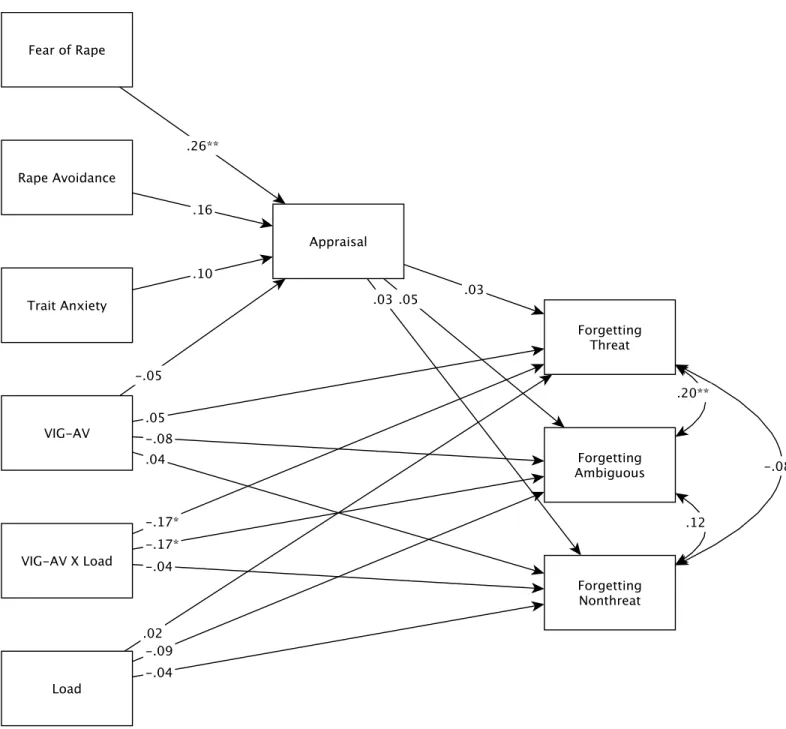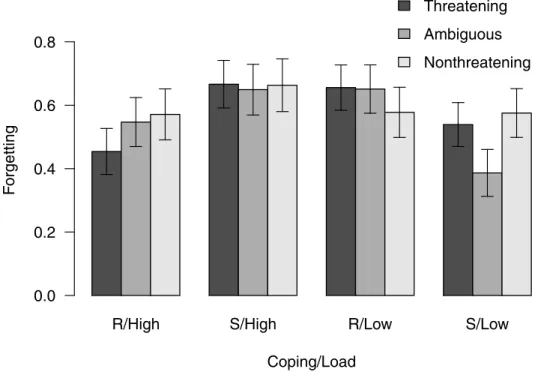Memory for pictures of sexual assault: Sensitive maintenance of ambiguous stimuli
Volltext
Abbildung



ÄHNLICHE DOKUMENTE
In the latency range of the to-be-expected phoneme for the disconfirming #-items we observed larger values of induced GBA if the expected phoneme was specified
I speculate that gender differences do not show up in imaging studies on MSCs because in both male and female practitioners mystical union relies on a neural substrate more
Figure 4: Influence of harassment cost to males on the evolutionary equilibrium of male harassment and female resistance (A) and the resultant equilibrium densities of males
Note that no parameter has such effects that changes in a single parameter diminishes the gap between the test data set and the real data set with respect to
Positive concrete experiences within the CASH/A program will develop a core of knowledge that, with cadet leaders and staff and faculty as role models and men- tors, will make
As also supported by literature that the content produced by media takes into account collective assumptions, perceptions, beliefs and consciousness of the people
ii) instead of using a fixed number of sperm to fertilize the eggs a fixed volume of 55 µl of sperm suspension was used. The sperm suspension was prepared as in the main experiment
Dada la existencia de un subgrupo de HSH que tienen dificultades de iniciar y mantener conductas de sexo más seguras (e.g. adoptar consistentemente el uso del condón durante